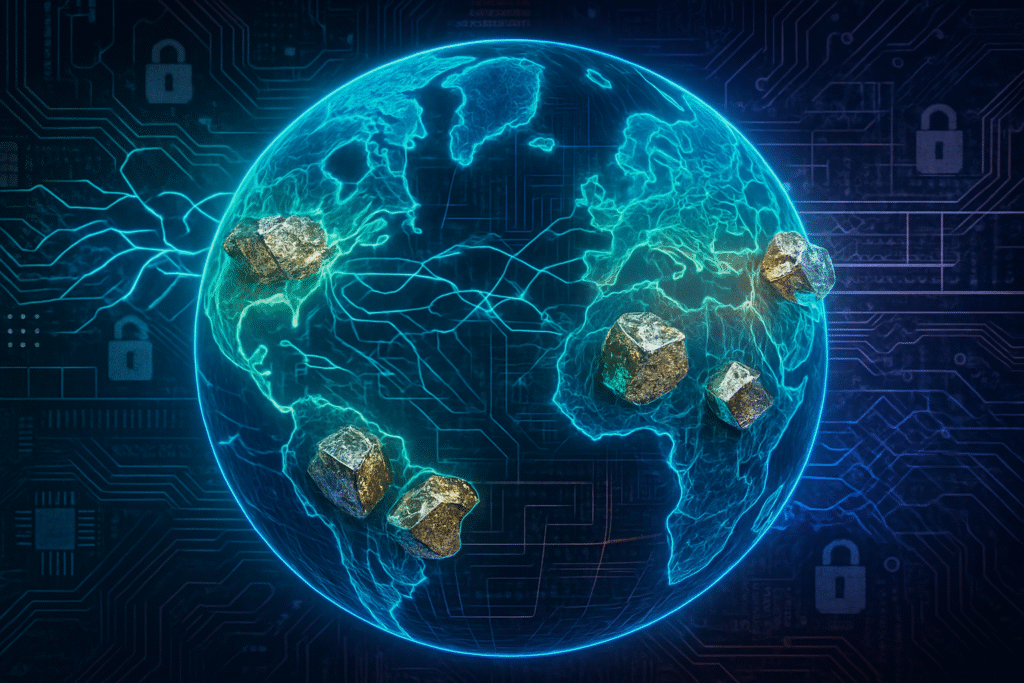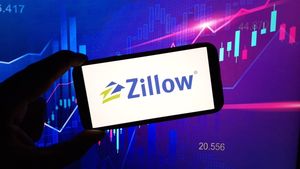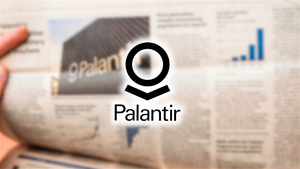
Beijing's Expanded Export Restrictions Send Shockwaves Through Semiconductor and Defense Industries
On Thursday, October 9, 2025, China significantly expanded its rare earth export restrictions, implementing stringent new controls that directly target foreign defense and advanced semiconductor users. This decisive move, announced by China's Ministry of Commerce, marks a critical escalation in the ongoing geopolitical competition, leveraging Beijing's near-monopoly on these vital materials to assert national security interests and strategic leverage. The immediate significance of these restrictions lies in their profound potential to disrupt global supply chains, impede national defense capabilities, and introduce significant uncertainty for the worldwide semiconductor industry, particularly impacting the development and deployment of artificial intelligence (AI) technologies.
The expanded measures, some taking immediate effect and others slated for December 1, 2025, go far beyond previous rare earth export quotas. They introduce broad licensing requirements for a wider range of rare earth elements and, critically, the advanced processing technologies used to extract and refine them. This strategic pivot signals China's intent to control not just the raw materials, but also the intellectual property and manufacturing know-how that underpins the global rare earth supply chain, directly challenging the technological independence of nations reliant on these critical inputs.
The Indispensable Role of Rare Earths in High-Tech and China's Strategic Chokepoint
Rare earth elements (REEs), a group of 17 metallic elements including the 15 lanthanides, scandium, and yttrium, are not "rare" in geological terms but are notoriously difficult and costly to mine and process. Their unique electrical, magnetic, and optical properties make them indispensable for modern high-tech applications, particularly in semiconductor manufacturing and advanced AI hardware. For instance, cerium oxide (CeO2) is crucial for chemical-mechanical planarization (CMP), a vital wafer polishing step in chip fabrication. Neodymium, often alloyed with praseodymium, is essential for powerful permanent magnets used in critical semiconductor manufacturing equipment like lithography scanners, as well as in AI-powered robotics, drones, and electric vehicle motors. Dysprosium and terbium enhance the high-temperature performance of these magnets, while europium is pivotal for phosphors in advanced displays. Gallium and germanium, also categorized as critical rare earths, are fundamental to high-performance chips and optoelectronics.
The October 2025 restrictions significantly broaden the scope of China's export controls. They now encompass all 17 rare earth elements, adding holmium, erbium, thulium, europium, and ytterbium to the existing list. More importantly, the controls extend to advanced processing technologies for rare earth mining, smelting, separation, metallurgy, magnetic material manufacturing, and secondary resource recovery, including specialized equipment for rare earth recycling. Export applications for "advanced semiconductors" (logic chips at 14 nanometers and below, memory chips with 256 layers or more, and associated manufacturing tools) will be approved only on a case-by-case basis, introducing immense uncertainty. Furthermore, licenses for "foreign military forces" or "overseas defense users" will, "in principle," not be granted, effectively imposing a near-blanket ban.
These new measures represent a significant escalation from previous Chinese export controls. Earlier restrictions, such as those implemented in April 2025, primarily focused on specific rare earth elements and magnets. The October 2025 controls shift towards a technology-focused approach, explicitly targeting downstream applications in advanced tech sectors like semiconductors and AI with military potential. A key departure is the "extraterritorial" application, requiring foreign entities to obtain export licenses for products containing even "tiny amounts" (0.1% or more of value) of Chinese-origin rare earths or those manufactured using Chinese rare earth processing technology. This mirrors Western, particularly U.S., restrictions on semiconductor exports, signaling a tit-for-tat escalation in the tech trade war. Initial reactions from the AI research community and industry experts are largely characterized by alarm, with many interpreting the move as China "weaponizing" its rare earth dominance to gain geopolitical leverage.
Ripple Effects: Tech Giants, AI Innovators, and Defense Contractors on Edge
The expanded rare earth export restrictions are poised to send significant ripple effects across the global technology landscape, creating clear winners and losers. Major tech giants and defense contractors, heavily reliant on Chinese rare earths for their sophisticated products and manufacturing processes, stand to be severely disadvantaged. Conversely, non-Chinese rare earth producers, alternative material developers, and recycling innovators are likely to see a surge in demand and investment.
Companies like Apple (NASDAQ: AAPL), Dell Technologies (NYSE: DELL), HP (NYSE: HPQ), IBM (NYSE: IBM), Intel (NASDAQ: INTC), Samsung (KRX: 005930), and TSMC (NYSE: TSM) face substantial disruption. Their extensive use of rare earths in smartphones, laptops, servers, AI accelerators, and data centers, as well as in critical semiconductor manufacturing equipment, will lead to potential production delays, increased costs, and complex compliance hurdles. AI labs and startups developing hardware, robotics, or advanced computing solutions that depend on specialized rare earth components will also experience heightened supply chain uncertainty and potentially prohibitive material costs. Defense contractors are perhaps the most impacted, facing a near-blanket license prohibition for rare earth materials used in military applications, which will disrupt supply chains for guidance systems, radar technologies, and advanced weaponry.
On the other hand, non-Chinese rare earth producers and processors are poised to benefit significantly. Companies such as MP Materials (NYSE: MP), operating the Mountain Pass mine in California, USA Rare Earth, which is building an integrated "mine-to-magnet" supply chain in the U.S., American Battery Technology (NASDAQ: ABML), focusing on rare earth salvage from battery recycling, and NioCorp (NASDAQ: NB), exploring rare earth magnet recycling, are strategically positioned. These firms will likely attract increased demand and strategic investments from governments and industries seeking to diversify supply chains. Developers of rare earth alternatives, such as ceramic magnets or advanced alloys, and e-waste recycling companies will also find new opportunities. Interestingly, Chinese rare earth companies like China Northern Rare Earth Group and Shenghe Resources saw their share prices surge, as these restrictions solidify China's dominant market position and enhance its pricing power.
The competitive implications are profound, accelerating global efforts to establish resilient rare earth supply chains outside China. This includes increased investment in mining, processing, and recycling facilities in other countries, as well as the development of "friend-shoring" initiatives. Tech companies will face higher raw material costs and potential manufacturing delays, compelling them to invest heavily in R&D to redesign products or develop viable alternative materials. Nations and companies that successfully secure diversified rare earth supply chains or develop effective alternatives will gain a significant strategic and competitive advantage, while those heavily reliant on Chinese rare earths will face persistent vulnerabilities.
Geopolitical Chessboard: AI, National Security, and Resource Nationalism
China's expanded rare earth export restrictions signify a major geopolitical maneuver, underscoring the critical role of these materials in the broader AI landscape and global power dynamics. This move fits squarely into a global trend of resource nationalism and technological decoupling, where nations increasingly view control over strategic materials as essential for national security and economic sovereignty.
The restrictions establish China's overwhelming control over the rare earth supply chain as a critical "chokepoint" in the global AI race. By controlling these essential inputs for AI chips, robotics, and advanced computing infrastructure, Beijing gains substantial leverage over nations developing advanced AI capabilities. This weaponization of resources is not new for China, which previously imposed an embargo on Japan in 2010 and, more recently, restricted exports of gallium, germanium, antimony, graphite, and tungsten between 2023 and 2025—all crucial for defense applications. These actions draw parallels to historical strategic resource control events, such as the OPEC oil embargoes of the 1970s, which similarly demonstrated how controlling vital resources could exert significant geopolitical pressure and reshape industrial strategies.
The direct targeting of foreign defense and semiconductor industries has profound national security implications, particularly for the United States and its allies. It poses a significant threat to military readiness and reindustrialization ambitions, forcing a rapid reassessment of strategic vulnerabilities. The extraterritorial reach of the new rules, requiring licenses for products containing even trace amounts of Chinese rare earths, creates widespread uncertainty and compliance challenges across global manufacturing. This escalates the ongoing trade and technology rivalry between the U.S. and China, raising the specter of further retaliatory measures and increasing the risk of a more confrontational global environment, akin to the "chip wars" but upstreamed to the raw material level.
These restrictions will undoubtedly intensify efforts by countries to "friendshore" or "reshore" critical mineral supplies, building more resilient supply chains with politically aligned nations or boosting domestic production. The European Commission has already expressed concern, urging China to act as a reliable partner, while South Korea and Taiwan, major semiconductor hubs, are assessing the impact and exploring diversification strategies. The long-term consequence is a likely acceleration towards a more fragmented global technology landscape, driven by national security imperatives rather than purely economic efficiency.
The Road Ahead: Diversification, Innovation, and Enduring Challenges
Looking ahead, China's expanded rare earth export restrictions will catalyze significant near-term and long-term developments in global supply chains, material science, and geopolitical responses. While immediate disruptions and price volatility are expected, particularly as existing rare earth inventory buffers deplete within the next 3-6 months, the long-term trajectory points towards a concerted global effort to reduce dependence on Chinese rare earths.
In the near term, high-tech manufacturers and defense contractors will grapple with securing critical components, potentially facing complete license bans for military uses and stricter conditions for advanced semiconductors. This will lead to increased costs and investment uncertainty. In the long term, nations are accelerating efforts to develop indigenous rare earth supply chains, investing in mining projects in Australia, the U.S., Canada, and Brazil, and enhancing recycling capacities. New processing plants, such as one set to open in Texas by 2026, and efforts by Belgium and South Korea to produce rare earth oxides and magnets by 2025, signal a determined push for diversification.
Material science research is also intensifying to find rare earth substitutes. While the unique properties of REEs make them difficult to replace without performance compromises, breakthroughs are emerging. A UK-based company, Materials Nexus, reportedly developed a rare-earth-free magnet using AI in just three months, showcasing the potential of advanced computational methods. Other research focuses on manganese-based, iron-nitride, and tetrataenite magnets as alternatives. Innovations in rare earth processing, including advanced hydrometallurgical techniques, bioleaching, in-situ leaching, and AI-enhanced recycling methods, are crucial for establishing competitive non-Chinese supply chains and reducing environmental impact.
Despite these promising developments, significant challenges remain. Building new rare earth production capacity is a lengthy and costly endeavor, often taking 10-15 years and hundreds of millions of dollars. Non-Chinese projects face higher production costs, complex permitting, and environmental concerns. Alternative magnet materials often offer lower magnetic strength and may require larger components, posing a performance gap. Western nations also face a skilled workforce shortage in the rare earth industry. Experts predict that while China's dominance is formidable, it may diminish over the next decade as new sources emerge globally, particularly reducing China's share of raw materials from an estimated 62% to 28% by 2035. However, the demand for rare earth elements is projected to double by 2050, driven by the renewable energy transition, creating persistent supply constraints even with diversification efforts.
A New Era of Resource Geopolitics: AI's Unforeseen Vulnerability
China's expanded rare earth export restrictions on October 9, 2025, mark a pivotal moment in global trade and technology, fundamentally reshaping the landscape for AI development and national security. This strategic move, leveraging China's unparalleled dominance in rare earth mining and processing, underscores a stark reality: access to critical raw materials is now as vital a battleground as control over advanced semiconductor manufacturing.
The key takeaway is that the era of globally integrated and optimized supply chains, driven purely by economic efficiency, is rapidly giving way to a new paradigm defined by resource nationalism and strategic autonomy. For the AI industry, this represents an unforeseen vulnerability. The very building blocks of AI hardware—from high-performance chips and data center cooling systems to advanced robotics and autonomous vehicles—are now subject to geopolitical leverage. This will undoubtedly accelerate the trend towards technological decoupling, forcing nations to prioritize supply chain resilience over cost, even if it means slower innovation or higher prices in the short term.
The long-term impact will be a profound restructuring of global technology supply chains, characterized by intensified investment in non-Chinese rare earth sources, a surge in R&D for alternative materials and recycling technologies, and closer integration of critical minerals policy with climate and security agendas. While China's short-term leverage is undeniable, the long-term effectiveness of such export controls remains debated, with some experts suggesting they may ultimately accelerate global self-sufficiency and diminish China's future dominance.
In the coming weeks and months, observers should closely watch for official responses from major importing nations, particularly the U.S., EU, Japan, and South Korea, including potential retaliatory measures and diplomatic efforts. The immediate impact on critical industries, rare earth price volatility, and the strategic adjustments made by major tech and defense companies will be crucial indicators. Furthermore, any announcements of new mining projects, processing facilities, and recycling initiatives outside of China will signal the global commitment to building truly resilient rare earth supply chains, charting a new course for the future of AI and global technological independence.
This content is intended for informational purposes only and represents analysis of current AI developments.
TokenRing AI delivers enterprise-grade solutions for multi-agent AI workflow orchestration, AI-powered development tools, and seamless remote collaboration platforms. For more information, visit https://www.tokenring.ai/.





